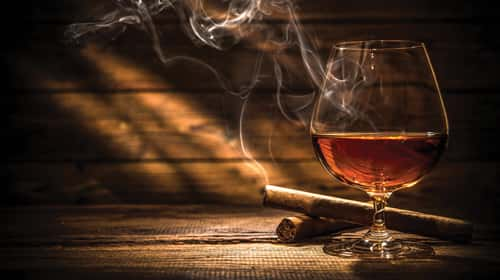Prohibition was once known as a “noble experiment.” President Herbert Hoover described it as “a great social and economic experiment, noble in motive and far-reaching purpose.” Under the 18th Amendment, the “manufacture, sale and transportation of intoxicating liquors” was forbidden from 1920 to 1933, but consumption was not considered illegal. By law, any wine, beer or spirits that Americans had stashed away as of January 1920 were theirs to keep and enjoy in the privacy of their homes.
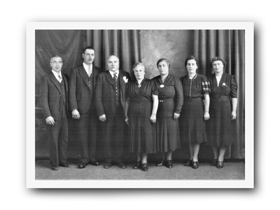 An army of federal agents was created to help enforce the 18th Amendment, and the Volstead Act stipulated that individual states should enforce Prohibition within their own borders. The impact on the beverage industry, however, was great as winemakers and distilleries struggled to survive in an industry that had been shut down. Despite the constitutional ban, those working in the industry used cunning and guile to maintain the viability of their businesses.
An army of federal agents was created to help enforce the 18th Amendment, and the Volstead Act stipulated that individual states should enforce Prohibition within their own borders. The impact on the beverage industry, however, was great as winemakers and distilleries struggled to survive in an industry that had been shut down. Despite the constitutional ban, those working in the industry used cunning and guile to maintain the viability of their businesses.
In Sonoma County, one young winemaker, Giuseppe Mazzoni, and his brother-in-law, Abramo Trusendi,produced jug wine during Prohibition inside the iconic weathered barn with white lettering advertising, “Dr. Pierce’s Medical Discovery,” located in Asti. “Prohibition seems so far away, but I hear the stories from my father, Mike,” says Lisa Mazzoni, owner and general manager of Zialena. “Giuseppe was my great grandfather, and we had 100 acres of vineyards,” says Lisa. “To survive Prohibition, they sold grapes to individuals in Marin and San Francisco. They made $100 cash per ton. By today’s standards, that’s pretty good. My grandfather and his older brother, Fred, made runs every day during harvest. They could deliver five tons a day. One truck held three tons; the other truck held two tons. It took them 12 hours to do the delivery,” she says. During the ban, says Lisa, people were allowed to make 200 gallons of wine a year for personal use.
 According to Lisa, it didn’t take the family long to recover from Prohibition. “My family were more grape growers and that helped them make a living. During Prohibition, they were producing wine so they had inventory ready to go in anticipation that it would end. They say they dumped the old vintages,” she adds with a laugh. “But I’m sure they found a way to bootleg it.”
According to Lisa, it didn’t take the family long to recover from Prohibition. “My family were more grape growers and that helped them make a living. During Prohibition, they were producing wine so they had inventory ready to go in anticipation that it would end. They say they dumped the old vintages,” she adds with a laugh. “But I’m sure they found a way to bootleg it.”
Post Prohibition
At one point, there were more than 5,000 distilleries in the United States, but that number plummeted following Prohibition. The number of active craft distillers in the U.S. grew more than 15 percent over the last year to 1,835 in August 2018, according to numbers compiled by the American Craft Spirits Association (ACSA), Park Street Imports and IWSR, a drinks market analysis company. What’s more, employment in the U.S. craft spirits industry is also on the rise. In 2017, industry employment grew by nearly 4,400 to more than 18,300.
What’s driving the movement? “With the growth of the craft cocktail movement, comes a desire for more high-end spirits, and craft distilleries are aware of that demand,” says Sarah Opatz, cofounder, Young & Yonder Spirits.
Legal challenges
Though it’s been 85 years since Prohibition ended, antiquated laws still impact the industry today. “After all these years, we still feel the ripple effects of Prohibition,” says Opatz. “In the three-tier distribution system, our access to the market is highly regulated.” (See “The Three-Tier System” on page XX.)
“Some laws changed recently, making it a lot more appropriate for 2018 and how we do business,” says Timo Marshall, co-founder of Spirit Works Distillery in Sebastopol. As of 2016, distillers can sell directly to consumers from the tasting room. According to Timo, the rules for tasting rooms are different for distilleries than for wineries and breweries, as those industries have the necessary money and individuals who’ve paved the way for today’s ease. In the distillery industry, it’s taking time to catch up. In 2013, Timo explains, they weren’t allowed to charge a tasting fee. However, wineries have been charging tasting fees in tasting rooms for years. “The wine industry had the money to change it—craft distillery’s didn’t,” says Timo. “But, we’ve seen a lot of growth in the past five years.”
The California Craft Distillers Act of 2015 officially went into effect in 2016 to provide greater equity between small craft distillers, those that produce less than 100,000 gallons per year. “The Craft Distillers Act has transformed our industry,” says Timo.
What’s more, the change in law allowed distilleries to have tasting rooms. “It was a game changer overnight,” adds Opatz. “Prior to the law change, we couldn’t sell directly to consumers, but now we can.”
Nevertheless, distilleries still navigate a maze of rules and regulations. “Distilleries have stricter rules and regulations than wineries and breweries in the state of California, which keep some people from going into this industry,” Opatz explains.
Despite legal challenges, the industry is growing. Here are a few unique distilleries to explore in the North Bay.
HelloCello & Prohibition Spirits
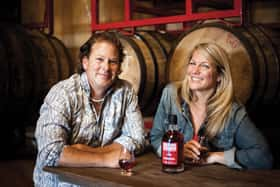 Amy and Fred Groth moved from Boulder, Colo., to Sonoma 10 years ago, looking to follow their passions and dreams. “We knew how to make limoncello, but it was just a hobby and something we made for family and friends,” says Amy. They soon discovered there was no limoncello to be found in Wine Country. “We decided to jump on the opportunity. We researched and learned there were no distilleries in Wine Country, and we were at the point in our careers where we wanted to shake things up.”
Amy and Fred Groth moved from Boulder, Colo., to Sonoma 10 years ago, looking to follow their passions and dreams. “We knew how to make limoncello, but it was just a hobby and something we made for family and friends,” says Amy. They soon discovered there was no limoncello to be found in Wine Country. “We decided to jump on the opportunity. We researched and learned there were no distilleries in Wine Country, and we were at the point in our careers where we wanted to shake things up.”
The husband-wife team launched HelloCello in 2008, and started producing limoncello the following year, becoming the first distillery to open in the Sonoma Valley since Prohibition. Fred is the distiller and Amy is the self-described “sous chef” of the business. Later, the Groths experimented with other fruit and produced two more products—Naval Orangecello and Black Mission FigCello.
The Groths later ventured into the whiskey world, and launched another brand, under Prohibition Spirits, producing a new product, Hooker’s House Whiskey as a tribute to General Joseph Hooker. “He was known for his whiskey and his women,” says Amy. “He had 500 women following him around known as the ‘Hooker’s Brigade’ and the ‘Hooker Girls,’ and he lived every day as his last.
They followed with two more whiskeys—Hooker’s House Rye and Hooker’s House Corn Whiskey. “We love sharing what we do,” says Amy. “It’s a lot of fun for us.”
Part of the fun for the Groths involves creating experiences for customers. “We like to educate people and their taste buds,” she says. The company offers mixology classes and cocktail competitions, working with private parties and corporate clients. People can create their own gin, according to their tastes, using ingredients such as ginger, lavender and vanilla bean.
Today, the company produces more than 55 products, and it’s a family affair. Their 15-year-old daughter, Bella, has launched her own line of olive oils and vinegar; and her 13-year-old twin brothers, Alex and Cooper, created their own line of bitters, called the Bitter Brothers.
Spirit Works
Sloe gin, the sweeter, low alcohol, berry-infused sibling to gin, is a labor of love for the owners of Spirit Works Distillery in Sebastopol, Timo and Ashby Marshall. Using hundreds of berries, or drupes, from the black thorn bush, containing tart and astringent qualities, the deep red color and perfect alternative to vermouth is an after-dinner treat and cocktail counterpart.
 The couple began making sloe gin in 2012 using Timo’s great-grandmother’s recipe. An England native, Timo had access to the sloe berry and perfected his family recipe. In 2012, living in the U.S., Timo and Ashby moved forward as business owners in Sebastopol, starting their own distillery, with sloe gin as their flagship product, along with vodka and gin (necessary elements to create sloe gin.)
The couple began making sloe gin in 2012 using Timo’s great-grandmother’s recipe. An England native, Timo had access to the sloe berry and perfected his family recipe. In 2012, living in the U.S., Timo and Ashby moved forward as business owners in Sebastopol, starting their own distillery, with sloe gin as their flagship product, along with vodka and gin (necessary elements to create sloe gin.)
“Our philosophy is grain-to-glass,” says Ashby of Spirit Works’ environmental and transparent distillation process. “We bring in whole grain and make our own fermented mash to feature the flavor of the grain.”
In their tasting room, a large window opens views to the distillery, where guests can watch every step in the process, while tasting a variety of spirits—vodka, sloe gin, barrel gin, straight wheat whiskey and straight rye whiskey. And with Spirit Works’ organic practices in place, the quality standards are set high. “We use the highest level of quality,” says Ashby. “Organic, non GMO, local family-run—we try to hit all the attributes.”
“The beauty of gin and why it’s an amazing product, is its myriad of flavor potentials,” says Ashby. “We make it unique and are able to play amongst the flavors. Juniper is a main ingredient in our gin. We haven’t found a local juniper with the flavor profiles we want, so we source it from Europe,” she adds. “We’re heavy on citrus for our gin, and we use hibiscus as well. It adds a light tea element.” During the process of developing their proprietary gin recipe, the team made 25 to 26 different recipes over a six-month period.
The distillery takes the same care with its whiskeys. It uses charred white oak barrels from a cooperage in Cloverdale to age their whiskeys for a four-year minimum. Featuring straight wheat whiskey and rye whiskey, the flavor profiles are unique and distinguished. Vanillin, an organic compound found in American oak, adds a natural vanilla flavor to the whiskey. Made from organic, red winter wheat from the Sacramento valley, their wheat whiskey is milled, mashed, fermented and distilled on property in Sebastopol, like all their spirits.
“We have a great team,” says Ashby. “It’s key to any local successful business.”
Young & Yonder Spirits
One distillery in the local spirit scene is Young & Yonder Spirits, an artisan craft distillery, founded by Sarah and Josh Opatz, which opened its new Healdsburg location in May. “Josh grew up in Healdsburg and had an interest in distilling,” says Opatz. In 2013, the couple started distilling while still living and working in San Francisco. They started by renting a warehouse in Cloverdale and made the drive each weekend to work on product development, focusing on vodka and gin.
But when the laws changed in 2016, the husband-wife team decided to move to Sonoma County and focus on their business full time. Today, the distillery offers five products—two vodkas, a gin, bourbon and absinthe. There’s a story behind each of the distillery’s products. The H.O.B.S (or Harbor of Broken Souls), for example, is a modern craft gin with a balance of rich juniper, citrus and floral elements, and pays homage to the relationship of gin and its importance in naval history. “Gin is what we’re most known for—it’s bright, fresh and floral,” says Opatz. “People come in and say they’re not gin drinkers, but they walk out with a bottle of gin.”
Another unique product is their Fellows & Foragers Absinthe, which includes a variety of classic absinthe herbs such as anise, fennel and wormwood combined with a variety of other botanicals, which gives it a contemporary twist. The absinthe uses 11 botanicals and more than 75 pounds of the botanicals for each 50-gallon batch. Why create absinthe? “We saw it as a challenge,” says Opatz. “And we loved the history.” Absinthe originated in Switzerland in the late 18th century, but rose in popularity in the late 19th and early 20th-century France, particularly among Parisian artists and writers.
Young & Yonder is open to the public for tastings and tours Thursday to Sunday from noon until 6 p.m., or Monday to Wednesday by appointment. The distillery is one of the first to offer craft cocktails. The cocktail menu changes monthly, recently featuring a 1920s-style cocktail known as the Lavender Bees Knees and a Vanilla Pear Drop.
Loch & Union Distilling
Another newcomer in the distillery industry in Napa’s American Canyon, Loch and Union Distillery is crafting American dry gin and barley gin. They’re currently aging their whiskey in Cabernet Sauvignon barrels from a local legacy winery, due to release in about three years. Custom-built copper stills made by famed German distillery fabricator, CARL, one of the finest and oldest manufacturers of stills in the world since 1869, is a visual masterpiece at the facility.
Founders Matthew Meyer and Colin Baker, former college classmates, left the corporate world for a career in distilling. At 30, Meyer is in the first year of development for the new distillery, which was officially up and running in early 2015.
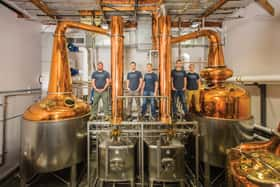 “Neither of us were feeling fulfilled,” says Meyer of he and his colleague’s business endeavors prior to distilling. In 2012, Baker was inspired by someone in a similar situation at his firm, who eventually started a microbrewery in London. “He fell in love with distilling and saw the potential,” says Meyer. “For me, it’s hard to sell what you don’t believe in,” he says. When Meyer and Baker decided to move forward with business venture, the two relocated to Napa County for production, but especially for the barrels. “The best cooperages in the world are in Napa, and our barrel program features high-profile wineries,” says Meyer.
“Neither of us were feeling fulfilled,” says Meyer of he and his colleague’s business endeavors prior to distilling. In 2012, Baker was inspired by someone in a similar situation at his firm, who eventually started a microbrewery in London. “He fell in love with distilling and saw the potential,” says Meyer. “For me, it’s hard to sell what you don’t believe in,” he says. When Meyer and Baker decided to move forward with business venture, the two relocated to Napa County for production, but especially for the barrels. “The best cooperages in the world are in Napa, and our barrel program features high-profile wineries,” says Meyer.
While they wait for their 100 percent malted barley whiskey to age, Loch and Union makes quality gin from 11 different botanicals and two corianders, and processes bulk wine to make fortification brandy for local Napa wineries. And they’re environmentally conscious, too. “Finding a way to conserve water was our number one priority,” he says. They use a series of heat exchanges to constantly cool and reuse water, so none of it goes to waste. “Sustainability is so important. It’s the future.”
The future of distilleries
While the wine and craft beer industry is well established in the North Bay, the artisanal spirit industry is still emerging and taking hold. If you spend any time in a cocktail bar, or a liquor store, you’ll notice a number of brands that weren’t available a few years ago.
In the meantime, current legal struggles within the industry have fostered a fellowship among those in the business. “As more craft distilleries are popping up, there is camaraderie among distillers to continue to change the laws,” says Opatz. She hopes consumers will help pave the way to change. “I hope more and more consumers ask for, and become interested in local spirits.”
“The more craft distilleries that open, the more locally supported they will be,” adds Ashby. “We’re obsessed with how the product is made, and the consumer can finally have access to variety—like beer and wine. If you look at the numbers, the demand for craft spirits is exponentially growing,” Ashby adds. “Our hope for the craft spirits industry is that consumers continue to ask the who, what, why, how questions every day. This gives craft producers a platform for growth, standing out from all the larger brands that don’t have the same story arch, depth of process, or quality of spirits as we do.”
Meanwhile, local distillers move forward with business. Says Opatz, “For us, our dream is to create a successful distillery that we can pass down to future generations.”
The Volstead Act
The Volstead Act included a few interesting exceptions to the ban on distributing alcohol. Sacramental wine was still permitted for religious purposes (the number of questionable rabbis and priests dramatically increased) and drug stores were allowed to sell “medicinal whiskey” to treat everything from the toothaches to the flu. With a physician’s prescription, patients could legally buy a pint of hard liquor every 10 days. Pharmaceutical booze often came with doctor’s orders such as: “Take three ounces every hour for stimulant until stimulated.”
Volpi’s Speakeasy
Through the swinging screen doors on the corner of Washington Street in Petaluma, you’ll find Volpi’s Italian restaurant—an heirloom establishment with a deep running history. Sylvio Volpi purchased the building in 1925 to house a grocery store featuring “top quality imported and domestic foods,” according to a family document.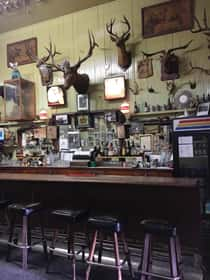
But during Prohibition, Volpi’s Grocery Store had a hidden gem—a small, discreet bar tucked in the back of the building, better known as a “speakeasy,” named after the practice of speaking quietly about such a place in public, or when inside it, so as not to alert the police and neighbors. According to records, ranchers would stop in to sell their goods, leave their grocery list at the counter, slip into the saloon in the back, and sip libations while the clerk filled their grocery list. An escape door led to the alley where patrons could conveniently flee in the event of a raid.
Alcohol was never produced on premises, but was supplied by stills located one mile out of town, according to a document written by Gina Volpi. And when Prohibition ended and liquor licenses were legal again for purchase, Volpi’s was the first business in the county to obtain one.
Not much has changed over the course of 100 years. However, in 1992, the grocery store was converted into an Italian family-style restaurant, serving famously large portions of Italian cuisine and stiff drinks that could make your toes curl.
The bar, decorated with taxidermied deer heads, trophy hunts, original pinewood floors, and oak grocery counters, is a reminder of a different era. And hundreds of family photos displayed on the walls are a reminder that Volpi’s is still family own and run. John Volpi can often be spotted playing the accordion in the back bar late in the night alongside guests, and the Volpi’s legacy lives on, long after Prohibition.
The Three-Tier System
Normal
0
false
false
false
EN-US
JA
X-NONE
The three-tier system was put in place following Prohibition around 1935, to regulate and control the alcohol industry. The three tiers include:
Tier One: Manufacturers and suppliers. This is anyone who makes or supplies the spirits. Tier Two: Distributors and wholesalers. This was meant to encourage fair market practices.
Tier Three: Retailers. This is where you purchase spirits, such as a bar, grocery store or anywhere that sells alcohol.
According to Park Street, a beverage brand advisory firm, the government was concerned with “tied house” practices; by virtue of having a partial or total ownership of retailers, suppliers coerced retailers to favor their brands. Consequently, the three-tier system framework was adopted, including banning unfair inducements to retailers.
The name “tied house” comes from a practice in England where a bar may be tied, by ownership links or contractual obligations, to a specific manufacturer. Prior to Prohibition, this practice was allowed in America, and it resulted in marketing practices that encouraged intemperance. (Tied houses in the U.S. would offer "free lunch" to promote business and heavily encouraged the consumption of their brand of beer to defray the cost of the give-away meal.)


